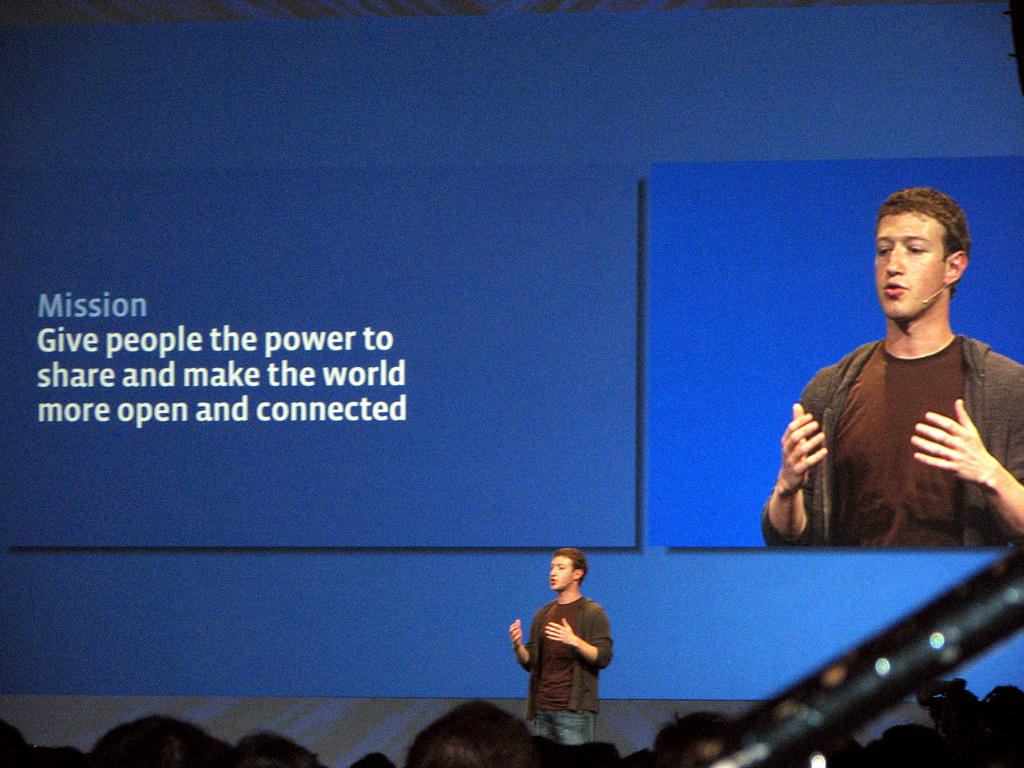Facebook recently announced its ambitious Augmented Reality Platform in its annual F8 Developer Conference. The firm’s CEO Mark Zuckerberg said, “We’re going to make the camera the first mainstream AR platform.”
Through the announcement, Facebook joined the long list of established firms that are already invested heavily in Augmented Reality (AR).
A recent report by Bloomberg outlines Apple’s ‘big step’ towards the AR space through talented hires and acquisitions in the related field. According to the report, to make smart glasses, in the short term, Apple’s AR features may first show up on the iPhone. Bloomberg’s report comes after its November story published last year, which highlighted Apple’s wearable expansion into ‘digital glasses’.
The AR industry is gaining momentum and could be a huge global market worth $90 million by 2020. For Apple, an AR adoption could mean a new dimension to its existing products, possibly resulting in new ones. Although a variety of AR apps (including Pokémon Go) are currently available for Apple’s iPhone, the company is yet to launch its own AR products.
A detailed report by UBS in February this year showed that early AR may arrive with iPhone 8, which could include a ‘moderate 3D mapping using stereoscopic vision and possibly an AR software development kit’. The report suggested that Apple has a competitive advantage with its core competencies which include hardware expertise, HW/software integration, a large and loyal customer database, and existing cloud infrastructure for data gathering.
Though nothing on its AR extension has been confirmed by Apple, its past AR-acquisitions subtly points towards the company’s intention of expanding the AR division. Such talent- acquisition will uplift Apple’s facial recognition and AR capabilities, preparing it for a potential AR demand and allowing it to compete with the likes of Microsoft and Samsung.
In 2015, Apple had acquired a German company Metaio, whose AR software has been used by Ikea and Ferrari. Metaio uses 3D tracking capable devices to develop and position AR apps. In the same year, Apple confirmed in a statement to TechCrunch that it acquired Zurich-based Faceshift — which creates animated avatars and other figures to capture a person’s facial expressions in real-time. Faceshift is most famously known for its motion capture tech in Star Wars.
In 2016, Apple bought a computer vision AR startup, FlyBy Media which allows mobile devices to “see” the world through “spatial recognition”. FlyBy Media has applications from indoor navigation and sensor fusion to image recognition and 3D tracking. According to Business Insider, FlyBy Media’s integration with Apple could potentially allow AR technology into the camera of future iPhones for image recognition through the camera’s feed.
In 2016, investments in both VR/AR startups have amounted to a whopping $2.3billion, about three times the $700+million invested in 2015, according to a report by Digi-Capital. Though both AR and VR alter our perception of the world, they remain quite distinguishable. While AR allows digital overlays within the existing reality, VR replaces real-world views through computer-generated simulations and disconnects people from the real space.

AR is already making its way into firms like BMW, Boeing, and Airbus to improve their existing capabilities. Boeing uses Google Glass to assist aircraft wire harnessing, helping the technicians reduce workflow time. Earlier this year, BMW became the world’s first automotive brand to offer its customers a 3D augmented experience of its products. With the help of Accenture, they built the BMW i Visualizer, an app powered by Google’s Tango that allows a customer to configure, customize, and walk around a BMW i3 and i8 before buying. Airbus uses MiRA/Smart Augmented Reality Tools (SART) for quality management and work optimization. The solution is also used for inspections of AirBus A380 that has significantly reduced inspection times from three weeks to three days. DHL warehouse workers are already equipped with AR smart glasses that enable quick hands-free item picking, with reduced error rates.
The third concept of Mixed Reality (MR) blurs these lines and combines the two worlds of AR and VR. A good example would be Microsoft’s HoloLens. HoloLens allows people, places, and objects from the “physical and virtual worlds to merge in a blended environment that becomes your canvas”. In February 2017, Samsung showcased a remote control VR/AR solution called Monitorless. The solution consists of a special pair of glasses that looks like regular sunglasses and enables consumers to use devices like smartphones and PCs without a monitor.
After the success of Pokémon Go, altering the reality is clearly the next big thing for firms investing in AR/VR/MR startups and more importantly, for consumers who are eager to embrace this next generation of technology.
Also published on BuzzFeed, LinkedIn Pulse & Medium
© 2017 Deena Zaidi. All rights reserved.
